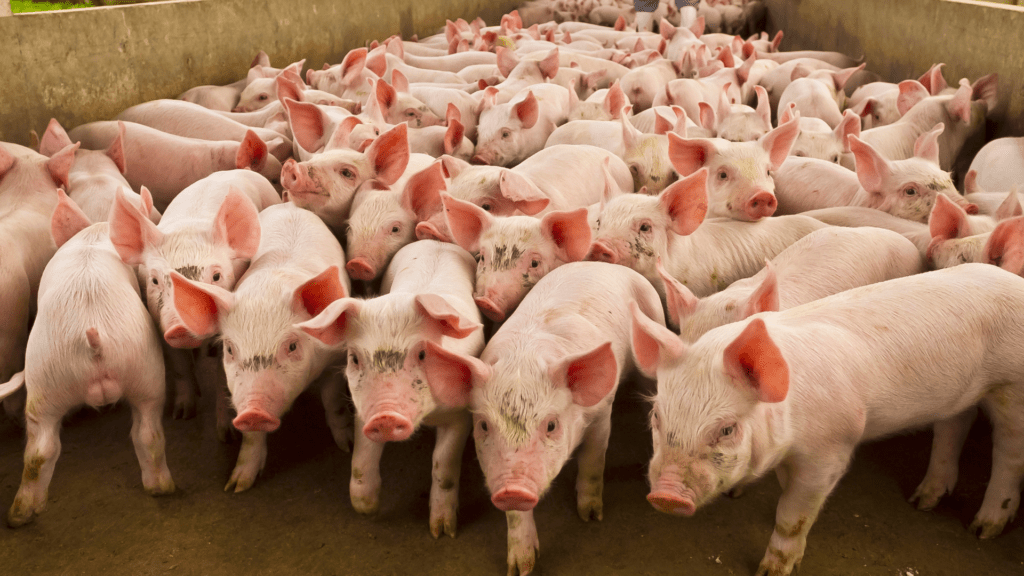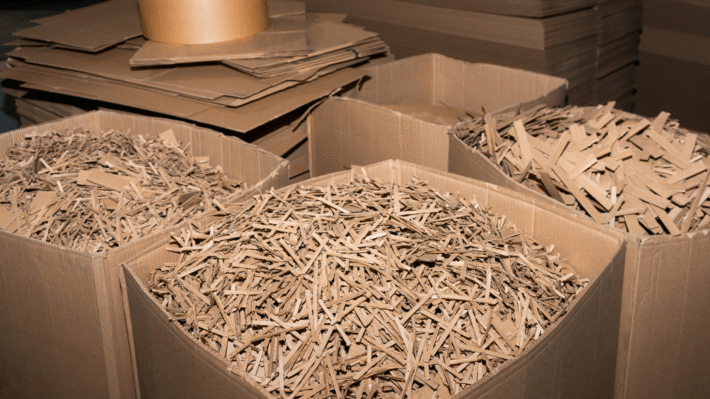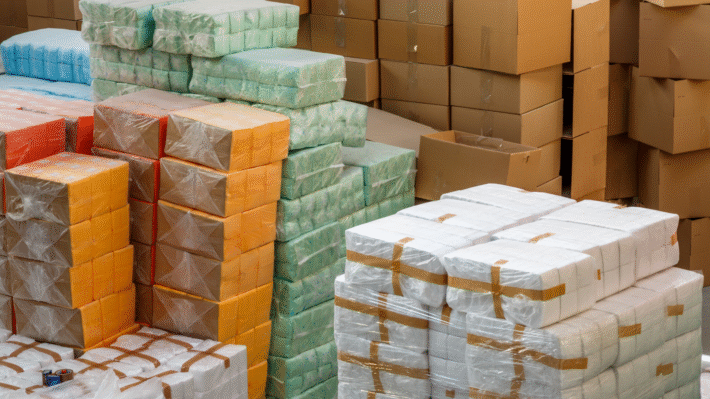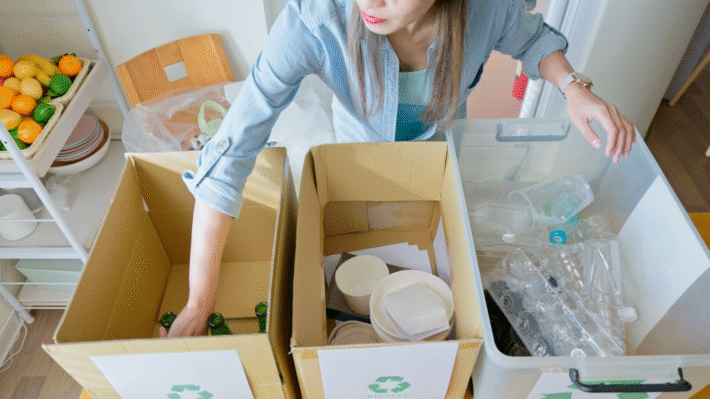Converting Livestock Waste into Fertilizers and Bioenergy

Creating a circular model for livestock waste is like finding a treasure in what seems like trash. Chemical fertilizers might have been the go-to for many years, but they come with problems such as nutrient runoff and waste management challenges. What if we could change this by using a circular system to turn livestock waste into powerful fertilizers and bioenergy? That’s exactly what we’re diving into here! By focusing on the principles of reduce, reuse, recycle, and recover, we can make something amazing happen.
Imagine converting cattle, poultry, and swine waste into a valuable resource. With the right technologies, this isn’t just a dream—it’s becoming a reality. Turning waste into bioenergy through methods like anaerobic digestion and composting offers the promise of a sustainable future. This can help reduce greenhouse gases, improve soil health, and contribute to a greener economy.
So let’s explore how creating circularity in manure and nutrient management can transform not only our land but our entire approach to sustainability!
Understanding Livestock Waste
Livestock waste is more than just dirt from animals. It can become something really useful, like fertilizers or energy, if we manage it right. Let’s understand what this waste is, its challenges, and its effects on the world around us.
Types of Livestock Waste
There are different kinds of waste from animals. Cattle, poultry, and swine all produce waste, but they are not the same.
Cattle Waste Composition
Cattle waste is full of organic materials. It has fibers and lots of water. This waste is big in volume and has nutrients like nitrogen and phosphorus. These nutrients can help crops grow if handled correctly.
Poultry Waste Characteristics
Poultry waste is usually drier than cattle waste. It contains feathers along with high levels of nitrogen. Because it is dry, it’s easier to store and transport. But it has a strong smell that needs special care to manage.
Swine Waste Properties
Swine waste has a liquid nature. It is rich in nutrients but also in fats. This waste is not easy to manage because of its high water content and can lead to environmental pollution if not treated well.
Challenges with Livestock Waste
Livestock waste may sound like a problem, but it can be useful if managed right. There are some challenges we need to overcome.
Dealing with Volume and Odor
One big problem is the volume of waste. There is just so much of it! The huge piles and strong odor from waste make it tough to manage. Odors, if not controlled, can bother people living near farms.
Storage and Nutrient Imbalance Issues
Storing this waste is not easy. It can leak and mix with water sources, causing trouble. Plus, if the nutrients in the waste are not balanced right, they can harm the soil instead of helping it. Too much of a nutrient can ruin the soil balance, creating more problems for farmers.
Environmental Impact of Livestock Waste
Livestock waste can do more harm than good if not managed properly. Here are some negative impacts it can have on the environment:
Leaching and Greenhouse Gas Emissions
When waste isn’t stored well, leaching happens. Leaching is when nutrients seep into the groundwater, causing pollution. This can affect plant growth and drinking water. Greenhouse gas emissions like methane come from waste too and contribute to global warming.
Effects on Soil Degradation
If livestock waste is not managed, it can damage the soil. It can make the soil acidic, which means plants don’t grow well. Proper waste management practices can turn this waste into a soil helper instead of a destroyer.
Understanding and handling livestock waste is key to making our environment better. If we use these resources wisely, they could become a treasure for farmers and help the earth.
Circularity Framework for Manure Management
To make the world a cleaner place, we can utilize the circularity framework for manure management. This system helps us take unwanted manure and turn it into something useful – like biogas or fertilizers. It makes sure nothing goes to waste and helps keep our planet healthy.
Stages of Circularity
Circularity has specific stages to follow through for it to work effectively. Each stage is important to turn waste into something beneficial.
Collection and Processing
First, we focus on collection and processing. We gather manure from farms, especially from animals like cows, chickens, and pigs. This involves setting up good storage systems. Next comes the processing. This might include breaking down the waste through methods like anaerobic digestion or composting. Processing makes it ready for the next step in the cycle, reducing its impact on the environment.
Valorization Through Biogas and Fertilizers
Then comes valorization. This means getting value out of the processed waste. Biogas is created through a process that captures gases from decomposition, mainly methane. We can use this biogas to make electricity and power vehicles. Fertilizers are made by turning processed waste into nutrient-rich soil enhancers. These can improve crop growth and soil quality.
Technology in Circular Processes
Different technologies make a circular system work efficiently. These innovations help us convert waste into valuable resources more easily.
Anaerobic Digestion Explained
Anaerobic digestion is a key technology. This is a process where bacteria break down manure without any air. The result is biogas, which is mainly methane. This gas can produce heat and electricity. Anaerobic digestion also creates a material called digestate which is good for soil.
Composting and Nutrient Recovery
Composting is another method that turns manure into a rich nutrient source. During composting, organic matter breaks down in a controlled setting. This helps turn waste into compost, which is fantastic for growing plants.
Nutrient recovery is a part of this. It focuses on getting important elements like nitrogen and phosphorus from manure. These can be reused in fertilizers which are essential for farming.
Biogas Upgrading Techniques
Finally, we have biogas upgrading techniques. These methods purify biogas, removing impurities to get biomethane. Biomethane is almost like natural gas and is especially useful for heat and transport fuels. This upgrading process makes sure the biogas we use is of high quality and can serve broader applications.
In summary, a circularity framework for manure management not only reduces waste but also transforms it into energy and fertilizers. This not only supports farmers but also contributes to a sustainable environment. By understanding and applying these stages and technologies, we save resources and make sure they remain sustainable for future generations.
Bioenergy Production from Manure
Producing bioenergy from manure is a fantastic way to turn waste into something useful. Instead of letting it cause problems, we can use it to make energy. Let’s dive into how this works.
Understanding Biogas
Biogas is a powerful energy source that comes from manure. It’s like capturing a fart and using it to power your home! Here’s how it works.
Components of Methane and Energy Generation
Biogas is mostly made up of methane. Methane is very flammable, which means it can be burned to create energy. When manure breaks down without air (a process called anaerobic digestion), methane is produced. We collect this methane and use it to generate electricity and heat. It’s like having your own energy factory right on the farm!
Using Biomethane Applications
Once we have biogas, we can clean it up a bit. This means removing things we don’t need, like carbon dioxide. When we do this, we get biomethane, which is even better than regular methane. Biomethane can be used in all sorts of ways. We can put it in special vehicles as fuel, use it to heat buildings, or pump it into natural gas pipes for others to use.
Sustainability Aspects of Bioenergy
Turning waste into energy is not just cool; it also helps the planet. Here’s how bioenergy stands out.
Mitigating Greenhouse Gases
When manure is left without treatment, it releases gases into the air that are not good for the environment. But, when we turn it into energy, these greenhouse gases are reduced. This means less gas that traps heat in the earth’s atmosphere, making it a friendlier place to live.
Waste-to-Energy Benefits and Decarbonization
Turning manure into energy is like cleaning two messes with one broom. We rid farms of waste while producing clean energy. It’s a win-win! Plus, using bioenergy moves us towards decarbonization. This big word means using less fossil fuels and more green energy. It helps keep our air clean and makes sure we care for our planet.
Remember, the next time you see a big pile of manure, there’s big power hidden inside it!
Nutrient Recycling for Fertilizer Production
Nutrient recycling is a way to take what animals leave behind and turn it into something valuable for plants. Let’s dive into how manure gets turned into different fertilizers, the good stuff about it, and some of the challenges we face.
Types of Fertilizers from Manure
Compost and Liquid Fertilizer
Compost is like magic soil for plants. It is made by taking animal manure and other organic stuff and letting it break down over time. This process adds nutrients to the soil and helps plants grow better. Liquid fertilizer is a watery form of nutrients taken from manure. Farmers like it because it can be sprayed easily on crops, feeding them directly.
Using Slurry in Agriculture
Slurry is a mix of manure and water. It may not sound nice, but it is loaded with nutrients like nitrogen that plants need. Farmers spread it on fields to feed the soil. This helps crops grow taller and greener.
Benefits of Nutrient Recycling
Improving Nutrient Efficiency
Nutrient recycling makes sure no bit of good stuff goes to waste. By using recycled manure, plants get exactly what they need to grow. This method uses every scrap of nutrient, making farming more efficient.
Reducing Leaching and Enhancing Soil Carbon
By carefully managing manure as fertilizer, the likelihood of leaching, which is when nutrients wash away into rivers, is reduced. This is better for the environment. Plus, manure can boost the carbon in soils, which helps keep nutrients around longer and keeps the soil healthy.
Challenges in Nutrient Recycling
Handling Nutrient Imbalance
Sometimes, manure does not have the perfect mix of nutrients. This means farmers need to watch out for too much of one nutrient and not enough of another. Balancing it just right can be tricky!
Ensuring Quality Control
Quality control means making sure the fertilizer is always safe and good for crops. If there are bad things in the manure, like pathogens, it could harm plants. So, farmers need to make sure it’s treated right before using it.
Compliance with Regulations
There are rules about how much manure can be used on fields and how it’s handled. Farmers and companies need to follow these rules to make sure they are not harming the environment. Keeping up with these regulations is a must for safe fertilizer use.
In short, nutrient recycling turns waste into wonderful plant food. But it takes knowledge and care to do it right.
Supply Chain and Integration
Exploring how we handle manure can make a big difference in the world. It’s not just about getting rid of waste; it’s about turning it into something useful. The supply chain is key to making this happen. It covers how manure is moved, used, and managed. Let’s dive into how all this works to keep everything efficient and sustainable.
Logistics of Manure Management
Actually moving all that manure from one place to another isn’t simple. It’s like solving a big puzzle. To make sure it’s managed well, we need to know the best ways to move it around.
Transportation and Distribution Processes
The journey starts with transportation. Trucks and other vehicles carry manure from farms to places where it can be processed. This process needs to be planned super well, so there’s no mess and no extra cost.
- Routes: Picking the right roads helps save time and gas.
- Handling: Manure containers must be strong to avoid spills.
- Schedules: Timing matters to prevent delays.
Economics of Circular Manure Management
Handling manure isn’t just about resources; it’s also about money. Economics helps us figure out what it costs and what can be earned from it.
Understanding Capital and Operational Costs
Knowing the costs is a big deal. We have to think about:
- Capital Costs: What does it take to buy the equipment and build facilities?
- Operational Costs: How much to run the whole system every day?
All these costs add up. But once we set up a smart system, it can save money and be friendly to the planet at the same time.
Exploring Business Models
Time to talk business! Picking the right way to run things can make or break the system.
- Co-ops: Farmers work together to split costs and make more.
- Public-Private Partnerships: Government and private companies team up for better results.
- Profit Models: Making products like fertilizers and bioenergy creates income.
Collaboration and Policy Support
Working alone can be tough. That’s why collaboration helps. Teaming up with others and getting policy support adds strength and success to the system.
Engaging Stakeholders
It pays to get people involved. Everyone has a part to play, from farmers to community leaders.
- Farmers: On the front lines, managing and using manure.
- Companies: Providing the tools and tech to make it happen.
- Local Communities: Helping make better decisions with their support.
Leveraging Policy Incentives
Government policies can act like a helping hand. With the right rules and incentives, this can encourage more folks to invest and participate.
- Grants: Money to kick start projects.
- Tax Breaks: Rewards for making green choices.
- Regulations: Clear guidelines to ensure safe and effective practices.
Farmer Education and Involvement
Farmers need to know how to make manure work for them best. It starts with learning and taking an active role.
- Workshops: Regular classes to show new trends and techniques.
- Training Programs: Hands-on learning about equipment and processes.
- Feedback Sessions: Farmers sharing experiences to improve the system.
Together, these strategies make sure that manure not only returns to the soil but does so in a way that supports our world.
Scaling and Innovation in Manure Circularity
Scaling Solutions for Smallholder Farms
Smallholder farms are tiny farms with big possibilities. Scaling solutions for smallholder farms means giving them the tools to make the most out of their resources. One idea is to use decentralized plants.
Decentralized Plants Opportunities
Instead of one big plant, decentralized plants are smaller and closer to where the waste is created. This makes it easier to handle manure right there on the farm! It helps farmers save money and time by not having to transport everything far away. And, they get to turn waste into valuable stuff like fertilizer and energy right at their doorstep!
Innovation in Nutrient Recovery
Innovation is like a super cool new idea. In nutrient recovery, it means finding even better ways to collect the good stuff from waste.
Emerging New Technologies
There are always emerging new technologies. These are fresh and exciting ways to make sure every useful part of the manure is put to good use. Imagine a machine or a process that does it faster and better!
Enhancing Biogas Upgrading
Enhancing biogas upgrading is about making the biogas, which is made from manure, even better. By upgrading, we turn the biogas into something like biomethane, which can be used as clean fuel for cars, heated homes, or even to make electricity. It’s like turning your trash into gold!
Overall Benefits to Sustainability
When we talk about sustainability, we mean doing things in a way that helps our Earth stay healthy for a long time.
Impact on Soil Health and Climate
Using resources from manure the right way helps make the soil better. It also helps with soil health, which means all the little living things in the soil are happy and working as they should. On top of that, it helps lower the bad gases that hurt our climate, making the planet a friendlier place.
Contributing to a Green Economy
The green economy is about growing while taking care of our planet. By turning waste into useful products, more jobs are created, new businesses are born, and we use less harmful stuff. It’s a win-win!
Manure isn’t just waste. It’s a treasure we can clean, use, and recycle into something valuable. By doing so, we help small farmers, create better resources, and make our planet a better place to live.
One comment
Comments are closed.




[…] to bioenergy is like turning waste into power. Cacao waste can be used to make biomass pellets and biogas. These […]